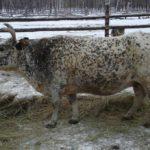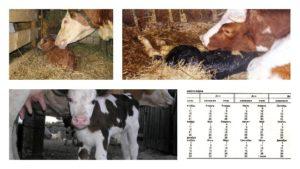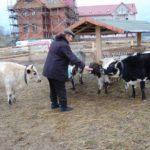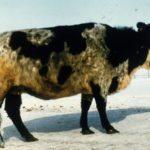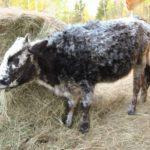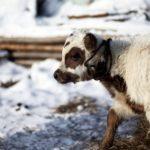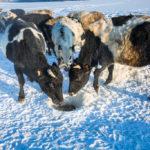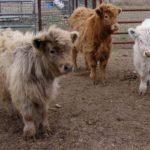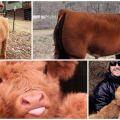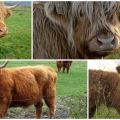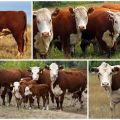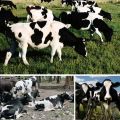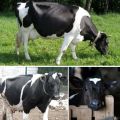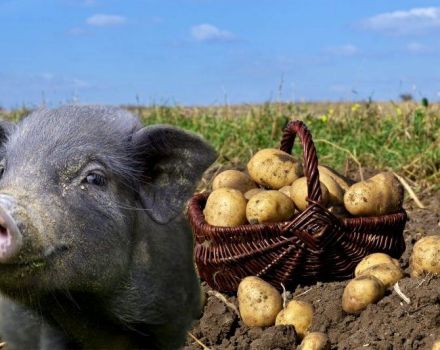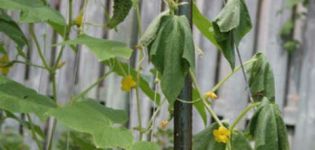Description and characteristics of the breed of Yakut cows, the rules for their maintenance
The Yakut miniature cow is not like other representatives of the horned tribe. The humpbacked baby has remarkable strength and agility. Due to the fault of unlucky breeders, the breed almost disappeared from the face of the earth, but with the help of livestock breeders, some of the cows were saved. Few people know that Yakuts are producers of nutritious milk and delicious marbled meat.
How the breed appeared
The Yakut cows inherited their colorful appearance from their ancestors - Indian zebu. The relationship with exotic animals is indicated by the slight humpback and the unusual structure of the animal's coat. The first representatives of the Yakut breed appeared on the territory of the Sakha Republic. By the middle of the 18th century, experts identified the distinctive features and qualities of the breed. The main advantages of animals were recognized as the ability of pets to endure severe frosts and simplicity in food.
Over the decades, the breed has evolved without undergoing changes. In the 20s of the last century, unpretentious pets began to be crossed with cows of the Kholmogory and Simmental breeds. Experiments led to the disappearance of shaggy cows. Experts tried to revive the breed, but failed to correct the situation. Today, animals can be seen only in individual private farms and in the Novosibirsk Research Institute of Agriculture nursery.
Description and characteristics of Yakut cows
Representatives of the Yakut breed belong to the meat and dairy species of cattle, but differ in many respects from their relatives. Yakuts love to make dizzying jumps, which allows them to overcome various obstacles on their way to fresh grass.
Burenki tolerate frosts without any problems, but they negatively perceive rains. Pets become attached to their owners and take care of them gratefully. Animals practically do not get sick and in most cases bring healthy calves. General signs of the Yakut breed:
- Yakut is one of the shortest cows. The growth of the largest individual barely reaches 120 cm.
- The maximum weight of bulls reaches 500 kg. The average cow weighs 340 kg.
- A small, well-knit body and short powerful legs testify to the pet's unpretentiousness and strength. The picture is somewhat spoiled by a humped back and an undeveloped, hanging backside.
- The cow's fleshy wide neck is crowned with a small head. In bulls, the skin on the neck is gathered in folds.
- The head of the animal is decorated with straight, slightly curved horns.
- Thick thick skin and long hair are designed to protect the cow from frost and annoying insects.
- Among animals, there are individuals painted in white, black or red shades. Spotted cows are often seen.
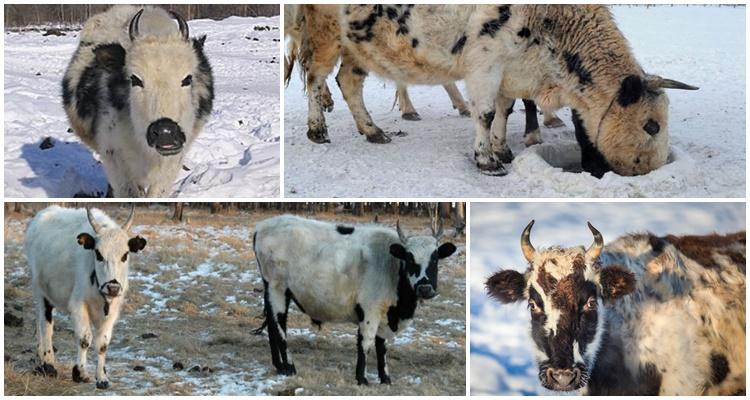
Miniature cows are extremely shaggy. The hair of animals is 2-3 times thicker than the wool of ordinary cows. With the onset of frost, the strands grow back quickly, becoming 5-6 times longer. Luxurious curly fur coat helps pets survive the fierce winter.
With the onset of steady heat, cows shed, shedding long strands of wool. The life expectancy of pets is 15-19 years.
You should not expect amazing milk yield from the Yakut. For a year, an unpretentious cow gives a little more than 1500 liters. This figure is 3 times lower than that of other cows. Modest milk yield is more than compensated by the quality of milk. The fat content of the product is 5-9%, and in terms of the content of vitamins it is a real record holder. Milk has a sweetish taste and is excellent for making butter, sour cream and other fermented milk products.
Yakut cows are known as suppliers of special marbled meat. It is famous not only for its exquisite taste and aroma, but also for the presence of substances that prevent the accumulation of cholesterol and carcinogens. The pale pink flesh of the product is dotted with thin layers of fat. Today, the task of livestock breeders is to save the few surviving representatives of the breed, so cattle are slaughtered extremely rarely.
Pros and cons of animals
Yakut babies do not require complex care, but some of the nuances of these animals must be taken into account.
How to maintain and care for the breed
Nature has taken care of the survival of Yakut cows in a harsh winter. Thanks to the fatty layer, dense skin and long wavy coat, cows can sleep right in the snow. They are not afraid of 50-degree frosts and gusts of icy winds, therefore, it is not worth building a capital warm cowshed for cows.
A place for summer walking
In the warm season, cows are content with fresh grass, tree branches, last year's hay and even bark. Due to the special structure of the intestines, animals are able to digest rough food. Before sending livestock to free grazing, the place for summer walking of animals is scrupulously inspected, removing sharp-angled stones, sticks and dead wood from the ground.If left to chance, horned pets risk injuring their eyes or the delicate skin of the udder.
Do not drive your cows to pastures planted with legumes, colza or rapeseed. This kind of food is popular with pets, but when overeating, animals suffer from bloating. It is undesirable to release cows into fields sown with cabbage or potatoes. On the territory of the pasture, sheds are installed to protect pets from rain and the scorching sun. Special feeders and drinkers are installed under the sheds.
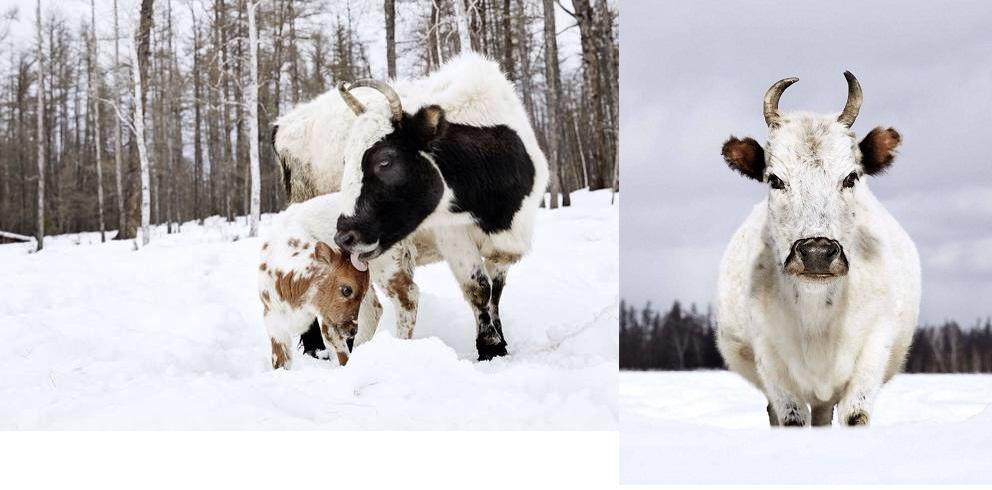
How to equip a barn
Animals do not need a warm room, an exception is made only for cows during calving. They build a khoton for the pets - this is how the name of the barn sounds in the local language. Hothon is equipped with hanging feeders for hay and green forage. Wet food is served to cows in troughs or shallow wide buckets. Ideally, the trough should be trapezoidal.
Animals sleep without problems in snowdrifts, so the floors in the barn are made of any cold material except metal. To create a comfortable environment, the barn floor can be covered with a light layer of hay and straw.
Content rules
Cows thrive in the fresh air. All year round they live in open pastures, without the need for a room. On the territory of the pasture, sheds are installed to protect pets from rain and the scorching sun. Special feeders and drinkers are placed under the shelter. The cows that have given birth are kept together with the calves in a light building. In any weather, cows and calves are regularly walked.
How to clean the barn
Feeders and drinkers are constantly washed. The remnants of the old feed are replaced with fresh products. If there is litter on the floor, the floor is changed as needed or thinned with fresh straw. If the barn floor is made of planks, the material is renewed every 4 years.
Diet
Yakut animals have long been accustomed to be content with pasture, but in winter, their diet consists of additional products.
In the summer
In summer, the main food for pets is lush meadow grass and tree twigs. If the vegetation on the pasture is scarce, the milk yield and fat content of milk in cows decrease. In this case, the pet diet is supplemented with compound feed and nutritious root crops.
In winter
In winter, the daily ration of cows consists of 6 kg of hay, 1 kg of root crops (carrots, beets) and 300 g of compound feed. The drinker is constantly filled with clean water.
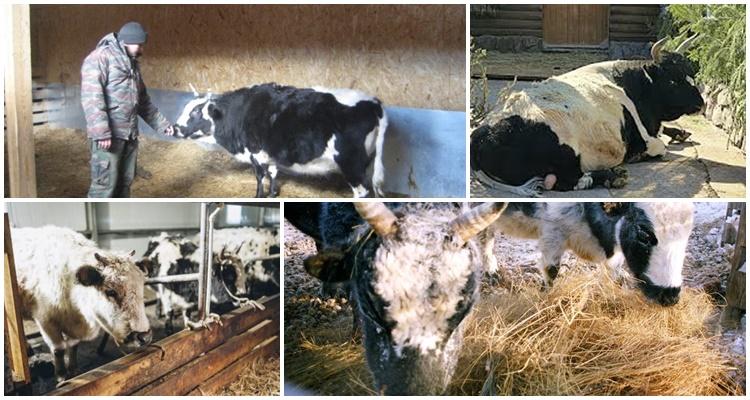
Breeding
Yakut cows are fertile and bear childbirth without any problems. The cow's restless behavior indicates that the time of calving is approaching. The animal hums pitifully, continually lies down and immediately gets up. Before calving, it is necessary to clean the room and change the bedding. The genitals of the woman in labor are treated with a solution of potassium permanganate.
The labor period lasts 30-40 minutes. The newborn calf is cleaned of birth secretions and mucus, the umbilical cord was cut with iodine and returned to the mother. After calving, the cow is washed with warm soapy water and wiped dry with a rag. The bedding in the stall is changed again.
Calves are born healthy and after 1.5 months the baby is transferred to a separate apartment. The average weight of newborn babies is 20 kg. Thanks to nutritious mother's milk, calves gain 800 g of weight daily. Yakut cows feed offspring up to 8 months, and then the young are transferred to roughage. By the age of 1.5 years, animals fatten up to 300 kg of weight.
Should I buy
Despite the high cost of calves and difficulties with delivery, the purchase of Yakut cows is a profitable venture.Unpretentious cows will fully recoup the investment, and with proper breeding, they will bring the owners a considerable income.
The small size of the cows makes it possible to breed livestock even in the limited area of a small farm.
Diseases
Thanks to strong immunity and high hemoglobin levels, cows do not get sick with leukemia, brucellosis and other common diseases.

